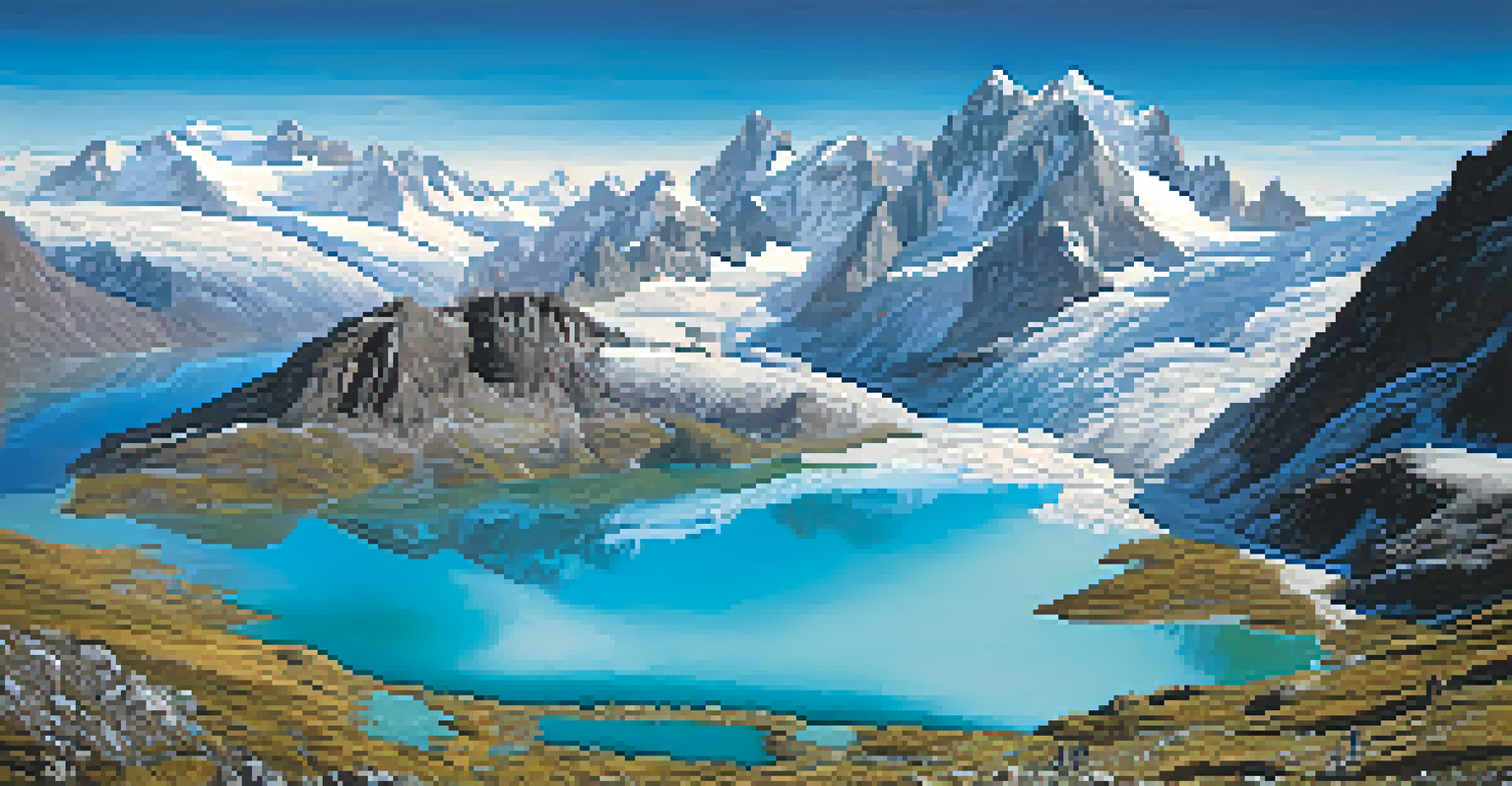Peru's National Parks: Protecting Wildlife and Ecosystems

Introduction to Peru's Rich Biodiversity
Peru is home to an astounding variety of flora and fauna, making it one of the most biodiverse countries in the world. From the Amazon rainforest to the Andes mountains, each ecosystem boasts unique wildlife and plant species. This rich biodiversity is not just fascinating; it plays a crucial role in maintaining the balance of our planet's ecosystems.
The environment is where we all meet; where we all have a mutual interest; it is the one thing all of us share.
National parks in Peru serve as vital sanctuaries for this wildlife, providing protected areas where species can thrive without the threat of human interference. These parks are designed to preserve the natural habitats that many endangered species rely on for survival. By safeguarding these areas, Peru is taking significant steps toward ensuring the continuity of its natural heritage.
Related Resource
Moreover, the biodiversity found in these parks is essential for scientific research and ecological studies. Understanding how these ecosystems function can help us develop better conservation strategies not only in Peru but globally. Ultimately, the protection of these national parks ensures that future generations can appreciate the wonders of Peru's wildlife.
Key National Parks and Their Unique Features
Among Peru's numerous national parks, Manu National Park stands out as a UNESCO World Heritage site, known for its incredible diversity of species and ecosystems. Stretching over 1.5 million hectares, it is home to thousands of species, many of which are endemic to the region. Visitors can encounter everything from jaguars to colorful macaws, all thriving in their natural habitats.

Another remarkable destination is the Huascarán National Park, which is famous for its stunning mountain landscapes and glacial lakes. This park not only attracts hikers and climbers but also serves as a habitat for unique wildlife, including the endangered Andean condor. The breathtaking scenery coupled with rich biodiversity makes it a must-visit for nature enthusiasts.
Peru's Biodiversity is Vital
Peru is one of the most biodiverse countries, with unique ecosystems that are crucial for global ecological balance.
Lastly, the Paracas National Reserve is a coastal park that protects a variety of marine and bird species. Its unique desert landscapes and rich marine life provide a different yet equally important ecological balance. The reserve is a haven for sea lions, penguins, and numerous migratory birds, showcasing the importance of protecting coastal ecosystems.
Conservation Efforts and Challenges
While Peru's national parks are crucial for wildlife protection, they face significant challenges. Deforestation, illegal mining, and poaching threaten the delicate ecosystems within these protected areas. Conservation efforts are ongoing, but the need for sustainable practices and stricter enforcement of laws is more critical than ever.
In every walk with nature, one receives far more than he seeks.
Local communities play a vital role in conservation efforts as they often depend on these natural resources for their livelihoods. Engaging them in sustainable tourism and conservation programs can create a win-win situation. By providing education and economic incentives, local populations can become stewards of the land, helping to protect their environment.
Related Resource
International support and partnerships also enhance conservation strategies. Collaborations with global organizations can provide the necessary resources and expertise to tackle these challenges. By working together, we can ensure that Peru's national parks continue to thrive and protect their incredible biodiversity.
The Role of Ecotourism in Conservation
Ecotourism has emerged as a powerful tool in promoting conservation efforts in Peru's national parks. By attracting visitors to experience the natural beauty and biodiversity, these parks can generate revenue that supports conservation initiatives. Responsible tourism practices ensure that the delicate ecosystems are maintained while providing economic benefits to local communities.
Visitors to these parks not only enjoy breathtaking landscapes but also contribute to wildlife protection through their entrance fees and participation in guided tours. Many tour operators prioritize sustainable practices, offering programs that educate tourists on the importance of preserving these unique environments. This fosters a deeper appreciation and understanding of Peru's rich natural heritage.
Conservation Faces Major Challenges
Despite the protection offered by national parks, threats like deforestation and poaching jeopardize Peru's wildlife.
Moreover, successful ecotourism can lead to the establishment of more protected areas. As awareness and interest grow, so does the motivation to conserve Peru's unique ecosystems. This creates a positive feedback loop where tourism funds conservation efforts, ultimately benefiting both wildlife and local communities.
Educational Programs and Community Involvement
Educational programs play a crucial role in fostering a culture of conservation within local communities. Many national parks in Peru offer workshops and training sessions that focus on sustainable practices, wildlife protection, and the importance of biodiversity. These efforts empower communities to take an active role in protecting their environment.
Schools in nearby areas often collaborate with park authorities to incorporate environmental education into their curricula. By teaching children about the significance of their local ecosystems, we cultivate a new generation of environmentally conscious individuals. This grassroots approach encourages long-term commitment to conservation.
Related Resource
Community involvement extends to participatory monitoring programs, where locals help track wildlife populations and report illegal activities. This engagement not only strengthens community ties but also enhances the effectiveness of conservation efforts. By uniting local knowledge with scientific research, we can create a more comprehensive strategy for protecting Peru's national parks.
The Importance of Indigenous Knowledge
Indigenous communities have inhabited Peru's diverse ecosystems for centuries, possessing invaluable knowledge about the land and its resources. Their traditional practices often align with sustainable management and conservation efforts. Integrating this indigenous knowledge into modern conservation strategies can lead to more effective outcomes.
For instance, many indigenous groups have long practiced sustainable fishing and farming methods that protect local ecosystems. By collaborating with these communities, conservationists can learn from their experiences and adapt these practices for broader application. This not only helps preserve biodiversity but also respects the cultural heritage of these communities.
Ecotourism Supports Conservation
Ecotourism generates revenue that aids conservation efforts while fostering appreciation for Peru's natural heritage.
Furthermore, recognizing and valuing indigenous knowledge fosters greater collaboration and trust between authorities and local populations. When indigenous voices are included in decision-making processes, it leads to more culturally sensitive and effective conservation strategies. This holistic approach is essential for ensuring the long-term protection of Peru's national parks.
Future Directions for Peru's National Parks
As we look to the future, the conservation of Peru's national parks will require a multifaceted approach. Strengthening legal protections and enhancing enforcement against illegal activities are essential steps. Additionally, expanding partnerships with NGOs and international organizations can provide the necessary resources for effective conservation.
Investing in sustainable tourism infrastructure will also play a crucial role. By promoting eco-friendly accommodations and responsible tour operations, we can ensure that tourism benefits both the environment and local communities. This will not only enhance visitor experiences but also contribute to the overall health of the ecosystems.

Finally, continued education and outreach are vital for raising awareness about the importance of these protected areas. Engaging both locals and tourists in conservation efforts creates a community of advocates for Peru's unique natural heritage. Together, we can work towards a sustainable future for Peru's national parks, ensuring that they continue to thrive for generations to come.